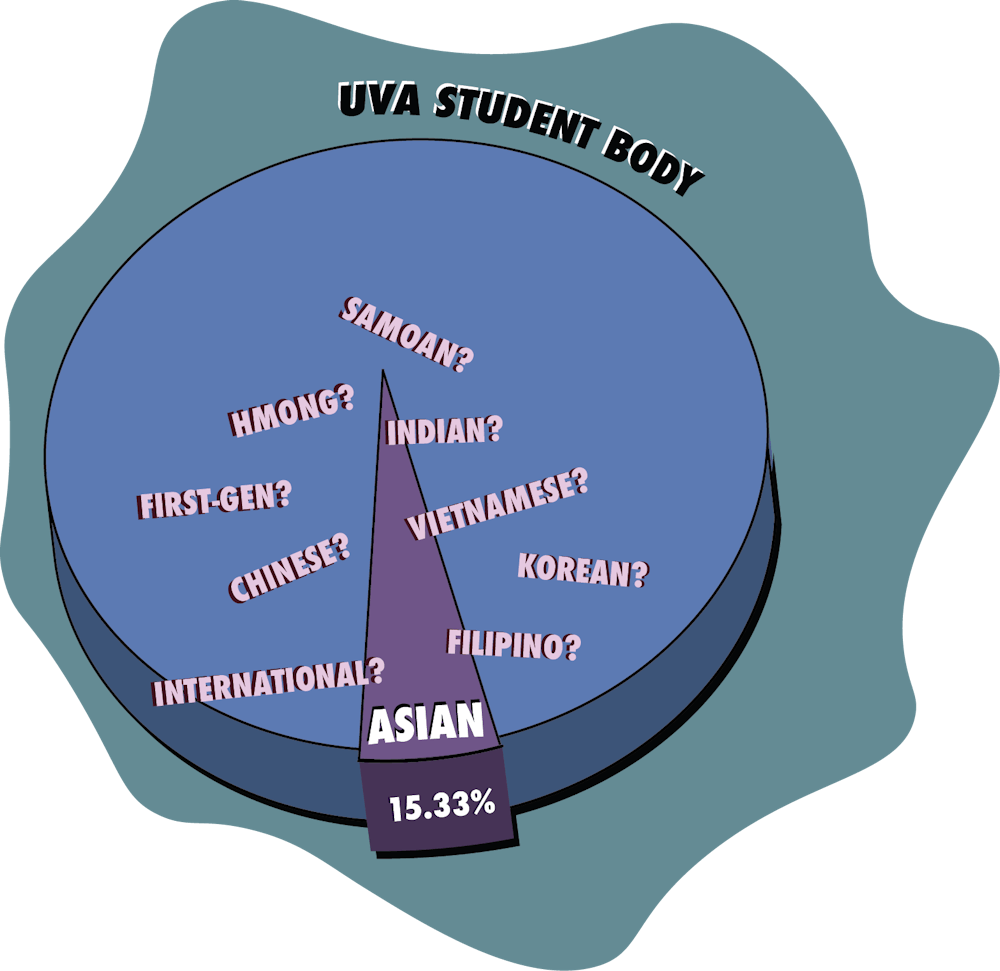An ongoing survey spearheaded by two students aims to collect disaggregate data about the Asian Pacific Islander Desi American population of the University and to provide an updated portrait of the community since the last survey was conducted in 2005. The survey is part of an ongoing national movement pushing for data-disaggregation for APIDA communities, and it will close Friday, March 6.
Records of previous surveys of the Asian American population conducted at the University were unearthed in Spring 2019 by Valerie Young, third-year College student and president of the Asian Student Union, while exploring ASU’s archives. Young found that the last survey of the Asian American community at the University was conducted in Spring 2005 by the Office of the Dean of Students and that, before then, similar surveys had also been conducted in 1993 and 1988.
Unsure of who might have knowledge regarding the surveys that had been found, Young and Kirtana Pathak, fourth-year College student and ASU vice president, turned to University professors and faculty. However, of those they consulted, only Professor Sylvia Chong was aware that these surveys of the University’s Asian American community had been conducted. Chong serves as an associate professor of English, associate director of American Studies and director of the Asian Pacific American Studies minor.
Young and Pathak discovered that, in fact, Chong had also been searching for the aforementioned results and reports. Chong had arrived at the University in 2004 and was thus present for the 2005 survey, but the results and report produced from that survey, along with those previously conducted, were somehow lost in the transition after former Asian Pacific American Dean Daisy Rodriguez left the University in 2006. The position of Asian Pacific American dean no longer exists. Instead, Multicultural Student Services now has general program coordinators.
In Fall 2019, Young and Pathak began a year-long independent study with Chong to design a new survey of the Asian American population at the University based upon the previously conducted surveys that had been found.
Together, they researched survey design and surveys done at other educational institutions and discussed extensively the importance of data disaggregation for communities, particularly Asian American ones.
“What we’re trying to do is capture that there are needs in the [Asian American] community,” Chong said. “Ethnic disaggregation is one of the simplest levels that we can do [data disaggregation] because we know historically that people from different national origins are immigrating under different circumstances.”
According to the University’s Diversity Dashboard — whose data is compiled from the self-identified race/ethnicity of students on their admissions applications to the University — Asian Americans have been the largest minority group among undergraduate students at the University since at least 2009, representing 11.18 percent of the undergraduate student population in 2009 and 15.33 percent in 2019.
However, the Dashboard shows only broad racial and ethnic categories, along with a category for “non-resident aliens,” under which most international students fall.
“There’s no disaggregation,” Young said. “It says there’s a bunch of Asian Americans — it has the numbers — but there’s [nothing showing] how many of these people are international or how many of these people identify as Vietnamese or are from [Northern Virginia].”
The 2020 survey designed by Young, Pathak and Chong is open to all Asian/Asian American-identifying students, including graduate, international and multiracial students.
To design this new survey, Young and Pathak analyzed the past surveys and added new questions and sections to collect responses for areas in which they found the past surveys to be lacking. However, they kept many of the questions asked on the past surveys to enable the comparison of results across years. Most of the survey’s questions are geared toward gauging the attitudes, feelings and experiences of Asian American students at the University.
To make the survey more relevant to contemporary Asian American students at the University, Young and Pathak modified some of the previously asked questions. They consulted staff at the LGBTQ Center to guide the expansion of options for gender identification, and they also updated the list of organizations in which students may indicate they are involved to reflect the creation of new organizations and dissolution of other organizations since the previous surveys.
Additionally, the survey now includes added sections with questions tailored for international and graduate students and a new question that asks the respondent to indicate their household income.
“[The question about] income level will also give some weight to what we call the bimodality of the Asian American population — that there are certain groups who immigrated … [that] tend to have higher income levels, and then there are also groups that … have tended to have lower socioeconomic status,” Chong said.
The previous surveys of the Asian/Asian American population at the University were officially conducted by ODOS in collaboration with ASU, but ODOS was unable to find any relevant records when Young and Pathak inquired about the surveys.
The new survey created by Young, Pathak and Chong is not officially affiliated with either the University or ASU, and they received funding from the Jefferson Trust, Multicultural Student Services and the American Studies Program. The funds will be used for professional anonymization and organization of the data collected from the survey, and the final report will be made public and shared with the University community.
Young, Pathak and Chong have been conducting outreach through social media and contacting student organizations to spread the survey since it first opened in early February. They each expressed hopes that many students will choose to participate in the survey and that the results will reflect the diversity of the Asian/Asian American community at the University.
“I know the national trends, but I don’t know who’s at U.Va.,” Chong said. “I know for a fact that there are working class, first generation Asian American students, and I just want to make sure that our data captures that they exist.”







